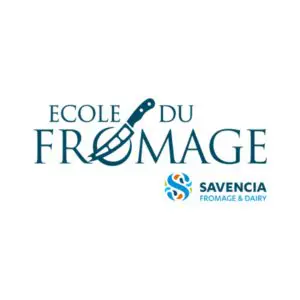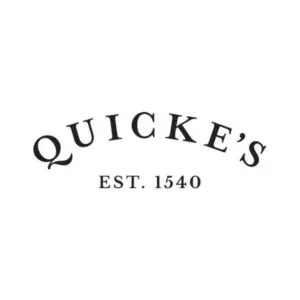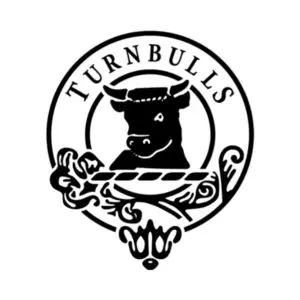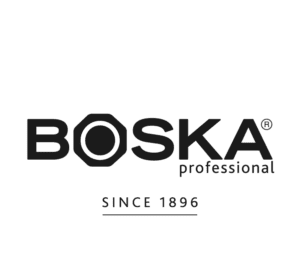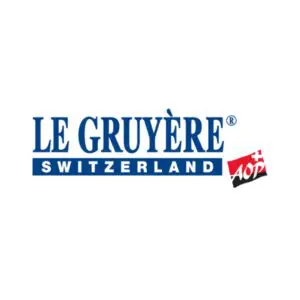TNCN Meet Hector Vergara and Camille Francois who will guide us into the world of South American Cheese and Wine. This will be a specially extended edition as we are covering a whole continent!
Streamed live on Sep 22, 2020
GUIDE TO TASTING CHEESE
Learn about the four stages of tasting cheese and how to take tasting notes with this definitive guide to tasting cheese.
South American Cheese and Wine Episode Video Transcript
Good evening, good evening everybody, it is Tuesday Night it is Cheese Night, let’s get the show on the road we are going to South America. We’re going to South America this is it’s a bit unbelievably exciting I obviously um think that Cheese from any part of the world is awesome but we are just more familiar with the Europeans, the Brits, the monsters, the Leicesters all that all the stuff that crosses our cheese mongers doors on a regular basis we very rarely think that the new world the South Americans and North Americans the Central Americas are big producers.
I mean we know we’re seeing things coming out of north africa right now in the middle east and i’ve even at the world cheese awards had yak cheese from nepal uh it tasted awful i’m gonna be honest but we’ve got to give people a run of it uh south america is extremely well known now for its new world wines uh particularly that chilean that that argentinian sort of center of excellence that combination of european air and clean clean ground has given opportunities uh to produce some awesome ones and we have tonight unbelievably lucky we’ve got hector vergara who is the only master sommelier of south america he’s sitting right now in uh in santiago in chile so let’s invite him in where are you hector hello hector good evening south america good evening friends uh very very happy to be participating talking about my not only my job my passion wines it we’re extremely lucky to to have you oh my wife’s sneaking in uh i’m gonna also add in camille here camille francois my wife is spent many years in peru and uh and bolivia and she just can’t resist coming to find out what’s going on she lamented that south america was not the capital for cheese well i don’t know what she just said but i’m hoping it was complimentary and we’ve just not broken south american european relations by accident no don’t worry we all we have a lot of relationship and the cheese world also we have a lot of influence that you’re really pleased to have here in chile when you are expatriated in one of these countries all right okay so camille i brought you in so you are our south american cheese expert but you’re not you’re not you’re not south american by birth where are you from no uh i’m french actually and uh i worked in uh which also has a really nice really nice i don’t know how to say english um well in in chile and uh here we are we are lucky to have a lot of different cheeses from different countries that we offer to the chilean people and we teach them how to eat them how to combine them with wines how to cook them it’s really really a really passion job for me here so so let’s let’s learn about how you got there you know in in a second i i we want to talk about the wine we want to talk about the cheese now as i understand it south america has no history old ancient history of cheese and wine so these are two things that have been brought by the colonization the spanish the portuguese influence coming into that part of the world am i right yeah exactly but why not yesterday well i’m going i’m uh as far as chile the first harvest was done in chile in 1551 we are the the eldest you know the oldest country in the americas to produce wines and the great variety that arrived is called it’s called a you know it is it’s a bush vine but still we have it and the so we have been producing one long long time and in 1850s some mining people them wealthy people from chile that traveled to europe and mainly for as far as wines they looked uh in france and they brought a cuttings of different grape varieties cabernet sauvignon merlot and we have as well the first one will taste it will be a caramel that is a grape that disappears from bordeaux because it wasn’t replanted after divine laos phylloxera arrived in europe so we have a long history of wines and but the country is renewing every every single day i can’t catch up with new producers people that sometimes sold the grapes now they’re starting to vinify their wines so we have a great amount of small producers apart from the big wineries that do an outstanding job as well so we have a great variety of wines from different places imagine that chile from north to south as far as the wine valleys we are one thousand close to one thousand six hundred kilometers one six hundred kilometers from north right now right now you’ve sent me some uh oh wrong direction there we go right um i hope everybody can see this it’s quite small but this is the wine regions of chilean and argentina am i right hector that’s right that’s right yeah and and and even i think the map that we sent it has been updated yet because we are much further south we are we are we have plantings uh we have planted say you know around 1200 kilometers south now since the warmer the warming of the planet we still can go further further down down the south so what you’re basically saying is global warming chile is not quite so chilly yeah yeah yeah well well well you know we are happy that we have the humble currents that runs along the pacific chilean coast peruvian coast as well so we benefit from the from the very cool sea breezes today we’re going to taste a couple of wines that come from coastal vineyards so we we are very happy we have the big huge andes mountains that i live very close to the andes mountains the on the other side is mendoza argentina and we benefit as well in the night from cool nights and our climate is always sometimes summer is warm but always dry so the nights are not suffocating and hot they are always fresh that’s why i think we can provide a great variety of wines of different great varieties so let me let me sum up what you’ve what you’ve said so we’ve got 500 years of south american wine production since 1850 or so you actually have grapes that weren’t taken out by philosopher as a whole of bordeaux and france and all that was done so you could reasonably argue that your grape varieties your vines are older than many european estates in fact most of european states that’s right wow yes okay so yes so all claims to great province in europe but just you know fake news chili is where it’s at yeah you know many people are amazed when visiting the vineyards and they see trunks about the offices 150 200 years old they are conducted what we call in english bush vine without any supporting so they’re not on those wires yeah okay i’m just i mean i know that so we now know that the wines of south america are old legendary deep-rooted perfectly suited i don’t think that’s true with cheese is it we’re much more recent with cheese no with cheese it’s it’s uh it’s not that advanced uh anyway cheese go to south america also with the colonization but for a long time now it has been only a really um simple cheese with no maturation with a really little microorganism impact so um but it’s been developing quite strong uh in chile we have a consumption of 12 kilos per year per inhabitant it’s on it’s half of french consumption it’s not that bad we’re 10 kilos oh in front it’s uh more like 26 kilos right yes the french the french you eat cheese for breakfast you’re getting a head start you know we like our fat at breakfast to be in bacon and sausages whereas you’re in there early you’re filling your croissants with cheese it’s not fair you you’ve got a head start yeah fresh was quite crazy about cheese i can’t tell i can testify but also we have to know that in argentina um the colonization has been really strong with the italian people which is a really strong chief culture and also swiss so in argentina they have a more uh culture of ripened cheese than in chile where it was mostly spanish colonization but it’s a really strong development right now and people are eating every every day more um rip ripening cheese and actually one thing that surprised me is that in chile one of the famous ripe and cheese is the blue cheese so you know that’s one of the the strongest ones so you can see that uh really quickly and uh you have got one that’s been sitting under my nose i almost don’t want to touch it it’s so stinky so this is one we’re going to taste tonight this is the uh solana yeah it is see that tea people out there all the london yeah right there goes the cheese okay uh touch that uh because i’ve had this about 10 days thank you guys very much for sending me cheese from south america i’m not only sure if that’s legal when they’re importing asian um this is this is white it’s purely white and it’s colored up and we can see the bacteria mold that orange distinctive thing uh bringing on the color on the outside now you were saying to me camille that this is a i don’t want we don’t taste this one yet we’re putting a taste last but this is like a telego monster kind of experience yeah anyway in latin america most of the macho cheese comes first from european yield and um but um let’s say that every day more uh they put their own signature on they uh on their cheeses and they use local ingredients like wine for example or species like uh chili to perfume their cheese and to change them in something really unique yes there was one you wanted to sell me that was going to be wine soaked and i you know i’m thinking similar to the spanish cheese mercier alvino when they’re soaking the whole cheese get that distinctive red coating but it’s not washed rind we’re not encouraging bacteria we’re simply giving it that um perfume of the grape perfume of the the the the skin of the of the wine yeah it’s like an inclusion it really feels like you’re eating something that comes right away right out from an old barrel it’s really interesting okay um so let’s let’s let’s quickly introduce you sir hector you’re the masterson only masterminder in latin america founder of the somalia guild of canada somalia of the creole in palace in paris a president of the similar association association of latin america um you’ve been all the way around the world you’ve you trained in london you learn your trading hotels in paris before circling back eventually to south america is that your career in a nutshell that’s right that’s right did you always want to bring yeah did you want to bring wine back to south america i’m sorry yeah yeah of course the wife from south america he has deep roots and the wind the shoulder of wines that i think they are very representative of red wines this afternoon tonight we only have one white but a pipeline is gaining ground as here as well sauvignon blanc apart from chardonnay wrestling from south vienne we have a alvarinos as well planted so we have a great variety of different different types of wines and then until now the consumption wines is not that high in the 60s uh we drank almost 60 liters per year it seems that quite a few guys because they obviously we count babies and everything but i think a lot of people were thinking see the average it was 60 liters per per person nowadays we are earning around 15 liters per person 15. oh you’re slacking so maybe you’re substituting quality yeah that’s right that to nowadays the quality is outstanding uh you know there are we have a there is the main knowledge the all the wine makers travel to beautify wines in worldwide different countries so there is no knowledge wineries have invested in knowledge and equipment and the best of all is the climate today we are going to take it i’ve got to interrupt you i’ve got to interrupt you you need to drink some wine you show us you need to show us the bottles let’s get excited with you uh let’s you we’re gonna show us what you’re drinking what’s on the table in front of you here i have a winery is called luminence the grape is called carmenere the vintage is 2018 and it comes from colshawa valley roughly situated about the 160 kilometers southwest of santiago and the 2018 vintage is a great it’s a great vintage because say springtime was perfect summer it wasn’t too warm we had no rains and the the grapes reached perfect maturity alcohol levels were normal and the sanity it was great we have very good acidity and freshness and here we have 2018 carminer kamener um that is a great variety that is a very late ripening rate normally in chile is a few weeks after cabernet sauvignon and even after the petit verdo and it produces a wine by the way is the second most consumed grape in chile wine in chile and probably it will take over cabernet sauvignon in in a few years because when you were telling you you were saying that they prefer a wine that is very soft very very velvety fruity and then this a18 it has a very i’ll i’ll do every very description it has a ruby medium intensity color on the nose and then it’s very much like a red red mature red fruits i’m talking about cherries i’m talking about the strawberries uh raspberries it has been aging oak part of the wine only we don’t want one can i can i drop you a second wise so this is a wine that does not exist this is a grape that does not exist in europe any longer is that right that’s right that’s right it disappeared 1860s 1870s when the white laos philosopher arrived and they didn’t read no it was planted here but it was planted in the wine rose together with cabernet sauvignon with mercury and so on until 1994 it was rediscovered in chile and it was standing quality wine and today camille what cheese yeah i have a very special cheese here that is also really really um emblematic of chile you can see here it’s um it’s a goat cheese that has incorporation of uh mel ken what is merchant merchant is the ancient mapuche which were the indigenous people that lived in chile before when the spanish arrived and they produced this chile with them with the pepper that is called a gold horn they dry it they smoke it and then they crush it with the coriander steam and salt and this is what they call mercury and it’s really nice because it gives the cheese a really you can see here the the really red bit it gives the cheese a subtle a smoky taste also um like a paper taste little bit and um pimenton uh hector do you know how you say it in english yementon paprika yeah paprika and i think it really matches the wine but you can feel in the nose this paprika also notes uh that are not difficult in the carbon air uh it gives it a really fresh aroma really nice go with the the fruity taste is not one thing it’s a combination of the spice and the herb and the salt is that right yeah it’s a preparation it would be like curry you know it’s a a mix of um of um paprika dried smoked paprika with coriander seeds yes it’s really it’s really typical from chile if you go to the airport uh there is a lot of merkin little pots so you can get a souvenir and it’s it’s quite interesting it has a really nice um and the also the goat cheese in chile is really um really typical from the northern regions so here you have the association of a really really uh chilean grape with a really retailing cheese and spice so here you have the perfect combination to go and travel and cheating so this this backhand i’m fascinated by this much the wine the wine it has a black black pepper black pepper from the peppermill the freshly ground peppery spicy and the tannins are very very soft silky tannins in the wine and with the with the when i tasted the cheese i found that it was a great harmony between the full flavor the rich flavor of the spicy flavor of the cheese matching the fruit driven one with the slight pepperies black pepper notes and i think it’s a wine that they match perfectly yeah yeah because we talk in the academy of cheese about how you predict good food and drink matching which is incredibly hard and really you can only do it by tasting both and making them work but the orthodoxy that we present in our courses is that in the simple flavors you’re looking to balance them off so the sweet salt savory acid bitter you’re looking for balance but in the complex flavors you’re looking for echoes so what you’re talking about there hector is the slight spiciness and the wine is being echoed in the slight spiciness of the cheese and that creates a taste bridge that brings them together that’s right that’s right yeah yeah this cheese is not too uh too strong it’s quite light the the goat cheese is really fresh it’s not that strong goat so you need a wine that wouldn’t um cover it all so the camera is perfect for that because it’s really fruity but it doesn’t have too much tannins it’s not too um invasive i don’t want to i want to ruin the mood and she’s brought some peruvian trisco oh yeah that’s nice it ain’t wine um but i felt that i at least ought to have something south america to drink on my table but she says that peru and south and chile have quite a strong rivalry i don’t know yeah okay so um but that’s really interesting okay what what what cheese and wine pairing have you got up next yeah next we have uh this uh solana cheese that uh you got impressed with because of his strong smell let’s do it last let’s do it last it is it is it’s a it feels strong can we do let’s let’s go let’s go to one of the others first uh so we could go to the regenito which is not strong but [Music] obviously that makes it a cousin to parmesan or parmigiano-reggiano as well and you can we can see clearly that it’s it’s of the same shape but it’s not it’s not got the same curd yeah it doesn’t have this regenito has a six-month maturation comes from argentina uh this is one of the legacy from italian uh immigrants and yeah uh it’s still a little bit young uh only six months so uh i already i also got to taste uh reggianito with way more months uh that was a special edition for last year anniversary of the brand santa rosa and it gets it gets the same texture with the time okay but it’s a really good quality because in front of that we only have some poor imitation of parmesan in chile and janito offers you a really good way to perfume your your pastas and your sauces and it’s quite interesting to have here so um this is it is it’s interesting you say the word perfume i’m definitely getting a perfume out of it i mean i don’t know why but the word lavender is almost coming to mind very very low level but an essential oil element to it um it’s sweeter it does not have the savoriness of mature parmesan or grano padano and it really doesn’t have the texture but considering you can’t call parmesan or granola parmesan at this age it really is it’s not trying to be the same thing i think so no and here you have very little sweet taste it’s really burstly you have walnuts you have some nuts also but you don’t have this like really um a strange update that you can find in the apartment uh the parmigiano for example it’s not too animal so for the south american palace it’s really appropriate because uh it’s easier to eat also so here we have a let’s uh here hector talk about the wine we chose to accompany this uh this team so we’ve got yeah william cole right yeah we will call um pinot noir william cole is an american guy that invested in vineyards in chile and this comes from casablanca valley which benefits from the cool sea breezes from a house from the ocean pacific a 100 percent pinot noir from the vintage 2018 and the pinot noir as we know is a difficult gray variety to grow to beautify but it can make out incredible outstanding wines and this is very like a basket of a of a fruit from the forest very much so because it’s very much going into raspberry a raspberry even the color the color of pinot noir seeing the antosons you know the agents that give the color you know they produce a big color ruby ruby hold that on the nose yeah on the nose it has the the the sorry the wine is quite transparent it looks like a light wine that looks delicious i know there’s a bit shallow of me but i love the idea of something coming from a place called casablanca so yeah and it is it it has the forest floor or the or the forest the undergrowth you know when you walk under the forest and you have mushrooms like that it has it’s a very it’s a very um seductive wine because tannins are low it has very good acidity and freshness it has been aged partly very very little with oak so the other part was fermenting is stainless steel vats to give the fruitiness of the wine to give the soul of the wine and the when i tasted with the seeds i found because it has certain acidity as well the wine apart from being forest floor uh red berries it has a gramosity to it the italians are so delicate you know pinot noir sometimes most of the times is a feminine wine you know it’s not the best it’s very dead are we laughing so so there’s been good question the the way hector is describing this wine camille um reminds me more of like a breeder mo than perhaps a than a reginator as you describe it with those forest floor elements the mushrooms the earth the the things that you would get from from from do you have in south america those kind of white mold cheeses yes we do i didn’t choose them because it was uh not really easy to uh to transport them to france in plain and then london i think it would have not been really good right now but uh yes we do and actually in brazil there is a really a big production uh but you have to know that in in latin america for now the taste is quite uh smooth so people want a really white and uniform uh mold uh they want uh inside quite homogeneous so it’s in the end it’s a a chip that is really um really buttery it has this uh hunger and humid taste but it’s not too um developed in the more in the garlic and the onion flavor that you can find in some common bearing frames um and uh and actually it’s quite it’s quite nice um to to eat that um and people here really really uh how you say that used to it uh come on bear and brie are the first uh one of the first specialties that were introduced uh in latin america in chile and brazil and um still we also see ourselves some french common bear but it’s still only quite a little volume so here but yeah i think you really you match the the point it’s a one that would go very well kind of with the white mold cheese also here i i i find it it’s really nice also with the reggianito because because of its acidity it’s uh it washed uh the the mouth from the the fats veil that you can find in regenito and um it really matches also the sweet um from the cheese with the raspberry with the acidity it’s really balanced i see that you’ve got um uh we’re gonna we’re gonna but much yeah than the fruitiness yeah can we can we taste next the vaniero veneto go ahead hector vinegar yeah so i mean in the in the uk um our knowledge of uh specific knowledge of grapes that have really changed and done a brilliant job is the way that you’ve um particularly the mendoza area malbecs um have i mean we know the malbecs of of cahor and that area which they’re very black wines very big wines and the south american tape on the malbec is much smoother and it’s become incredibly popular over here in in the way that it’s uh it’s being treated as a big meat wine um and and i would say it’s one of their it’s one of the sort of standout areas of where south america treatment or south american adoption of a european staple has created something fantastically new yeah yeah and this one it comes from a mendoza but it’s about the 90 kilometers south west at the foot of the andes mountains it’s called the valley de uco which benefits as well from the cool breezes from the mountains and the altitude is well over 1000 meters so you have freshness and then because in the in the other department of the oldest part of medosa is much warmer so being in a in a high altitude situated vineyard a with the sugar family a is trying to produce this wine should represent what uku valley produced nowadays in 2020 because it has it has a color that i described as a lavender you know it’s a it’s an inky color beautiful beautiful which is telling us that it’s very very young it’s from the same vintage 2018 and on the nose it has apart from the from the fresh fruit from the andes the mineral because the soils provides certain amounts you know there is a huge discussion very interesting question about minerality mineralizing for me sometimes it’s a wine guy it’s a little bit ethereal ethereal a way that is always fresh it has body it has tannins it has a strength but it’s always elegant it’s like a that’s what they say about me by the way just gonna say but always elegant and you also have the lavender yeah lavender it’s it’s it’s um uh let’s let’s let’s talk about the cheese then camille what what what are you bringing in with the um uh you’re usually it’s a it’s a wine washed goat’s cheese isn’t it exactly uh just uh just one comment it really strikes me when i smell this this wine it has a really strong black currant or black fruit taste it’s really striking interesting because it almost feels like you’re not uh smelling wine in the mineralities the two um uh smells aroma that struck me and then uh here we have a goat cheese which is a hard cook goat cheese and it has a six months maturation so it’s quite intense it’s quite uh spicy as well as when you taste it has a really strong aroma of goat goat like you are almost you could be in the in the table with the goat you know and not everybody’s taste yeah yeah and um it doesn’t have too much acidity because of the the long maturation and you can find also the this um it’s subtle but you feel like you are um inside a barrel an old barrel of wine you can find this uh swine um [Music] soaking bath you can feel it all inside the cheese it’s really infused with the wine it’s really got into the wine there yeah well you don’t see the the color is only on the outside but inside the cheese you really feel like it’s been infused yeah and here they do it with the uva which is the the traditional old chilean grape so it’s also great between um chilean terroir and wine and yeah in goat cheese i think uh can you hold it up to the camera hold the cheese up the camera and okay i feel like the cheese and the wine they also have the same color they do a bit let’s have a look at that let’s have a look at the cheese so we’ve got a slightly open we’ve got some openings going on there so that the curve is is is yeah slow down so we’ve got um bubbles developing inside the juice what is that a sort of 10 kilo cheese 14 kilo cheese maybe home uh i think this is uh like a five kilo um the information i’m not sure anymore from also a little autism this is uh the brand is the fermento like fermenting in spanish and uh it’s a small co-operative aggravation that started in 2013 and so uh it follows the european um [Music] economic model of corporation and they they do their the ripeness uh process for the small artisan that they are there there are keys to them and they also train them to uh to to improve their well they’re like uh so they’re an athena in in in european terms and they’re working with cooperative with or the cooperative cheese makers to bring the cheeses on to a broader market and bring them to particular so with a risk of of making it a school by error um a ferment ferment is a rennet or a starter in in spanish sorry in in in in french a ferment is the starter i believe is that right um it’s uh it’s not the rennet yeah it’s the saturn it’s the freedom yeah so so fermento is the spanish for ferment is that equivalent yep it’s a much more that’s a much more beautiful name than the british name of starter starters you know okay it’s accurate goes at the beginning but ferment romantic journey to it yeah it’s a little bit more about the process itself of the fermentation you can find in cheese and wine and many products that was the origin of this uh cooperative actually and then it’s specialized in cheese so good wine because we needed something really strong to uh pair with this go to cheese from fermentation punches need some crunchy so yeah i’m looking at the i found the cheese i found the cheese and at the back of the palate when i felt the last taste of the cheese i found the a big guy a big guy that was telling me here i am because i felt you know at the back of the palate you know we feel sweetness saltiness i see it from the side but at the back the last kick that gave me i felt oh oh and when i taste different wines i thought the sugar malbec a wine from high altitude will match up to it and he did because it’s a wine that a you know girl is a baby that is doing this quality and then i like very much i insist because it’s a very rocky place and still science cannot tell us how will pick up the the the minerality but i it is to me it’s ethereal ethereal ethereal ethereal that can fly almost it’s a beautiful wine it’s it’s interesting what you were saying there about you needed um a wine that matches because drinks and food matching is a bit like boxing you need to fly weight with a flyweight you need a welterweight with an over you need a heavy weight with a heavy weight otherwise you run you between extremely likely that one or other will just roll over but every now and again you do get the david goliath moment when the little one whether it’s a wine or a food somehow just neutralizes a really strong powerful breed i remember tasting um a rather boring lager that makes it really powerful with the true powerful gruyere but the lager managed to crush the grill and it was very surprising very difficult to predict food imagine so what have you got for us next camille what you mentioned i mentioned to me i said if i have a dish to eat i don’t want a dish in my in my glass no no what i mean is sometimes sometimes sometimes you can put a flavor wine with a full flavored dish but sometimes you can do the opposite the opposite so that’s why we mentioned i said i have a fish with meat with flavor we cooked with bones hours and hours but i don’t want sometimes in my glass another dish saying that perhaps i will look for another wine that will literally opposite but it’s very interesting this thing is very interesting i do agree i do agree we there’s there’s a there’s a discussion about this that um one of the reasons why uh new world wines particularly californian wines or some of the american wines are so successful in competition is because they do the whole dish thing they do the whole dish in the glass whereas if you look at traditional french italian spanish cuisine the dish is half the dish and the wine is the other half of the ditch and the two make sense together and that on their own they’re like um a husband without a wife yes that’s very nice we enjoy but more fun together you know uh yeah and that kind of um tradition of building wine as a flavor profile into a cuisine rather than standalone has been lost and makes less sense because when a person goes into the supermarket and chooses a bottle of wine they want that to be a complete experience in itself so that journey has been lost which i feel sad because when you get the complete experience of wine and and cuisine together it’s huge and awesome it’s an explosion of sense and also about that i can get you back the information but one day i tasted the pairing between the nevental which is a quite a soft steel teeth uh with honey and i was saying how the honey managed to get the amateur flavor way way more intense in the mouth and create an all new flavor they hold the two together it can be really interesting also cheese and honey i mean i’m guessing that that almontile was probably an old almental with that dry um no no no quite a young mental and uh really this is why i was so surprised because i thought that this amateur was quite common you know it’s quite the mental the great on your plate uh but with the the honey it was another thing totally another thing so i i didn’t really understand what happened there but uh what’s really interesting yeah yeah all these people that come up to you and go oh this always matches with that i’m going nah that never happens the surprises also are the best bit so what have you got next tell us what you got next um i have to see if my assistant my life assistant prepared already the provolita or not because this is the argentinian cheese that is uh commonly prepared in the barbecue so um i don’t know i’m not prepared to barbecue i do not have i this is not a james martin moment i’m afraid or no don’t worry you can still taste it together well i wanted to show you on the plate how it looks like but we can go with the mozzarella the time that we uh like prepare it now i’ve got to be honest i don’t think my mozzarella has um has i don’t think it’s traveled well well yeah it’s a really fresh cheese maybe you shouldn’t risk it yeah but i’m gonna show it to the people because i think it’s a good example of how all respect um this is what happens when mozzarella gets a bit too old you get this kind i don’t think you can see it um you get a real breakdown of the curd so this is a tip for people who are watching squeezing a mozzarella in is a really good indication of of quality you should be able to feel the firmness of the mozzarella and it could almost have the texture of i mean the foam is almost like the right peach that kind of thing if it begins to feel a little bit squidgy um and the outside’s beginning to decay it’s it’s all over the flavors moved on the texture’s beginning to decline um but for a cheese that’s come all the way from south america um i’m giving it the benefit of the dough yeah well you should um what is interesting about this mozzarella is that it comes from colombia and colombia is really famous for its buffalo breeds they make but they also make yogurt they also make a lot of things when you you say in colombia you think about the exotic country but when you go down uh to bogota to the capital which is uh at more than three thousand meters high above the sea you have a really more uh mountain climbing so it’s really fresh it’s really humid and it’s perfect for the bella breeze really yeah it is because i’ve i’ve not been to colombia i’ve been to venezuela though and in venezuela we met buffalo a guy was using them in the in the i don’t call them swamps but very wet areas very low lying areas and they were using the buffalo because they’re very very robust in water and they were using them we ended up having buffalo races it was bizarre so so to steer the buffalo they put a ring through its nose they put a rope on the buffalo and you galloped along not the most comfort ride and what you do is if you want to turn left you flip the rope rounder and you pull its nose around that way and if you wanted to go there you lift the rope brother and pull the nose around the other way um so recommendation academy of cheese lovers out there buffalo racing in venezuela but it’s obviously a thing yeah it is a special breed of uh water buffalo and the it’s it’s interesting because they have to go very high high to gray so uh when they uh milk the the the buffaloes the milk has to go down to the fabric on the mule uh bag so it will take hard just to take down the milk and then start the production it’s uh it’s really interesting we have been there and uh we have been uh walking around and we we went to the fields by new hampshire mule back also um so this mozzarella actually it’s quite the same as a mozzarella from italia uh it it gets the same creamy texture the same taste uh but interesting thing is more the the origin and here um hector choose for us a really good wine and it’s gonna thank you tuesday right really just enjoy yourself with the description that you make in mozzarella because it’s not a it has a lactic lactic aroma is very creamy and i i felt that i needed um when i if i pick a wine i chose the wine and shop that it has been asian woods only 30 percent but it wasn’t wood we posted a shard in barrels white barrels only thirty percent this wine a marathon from a um a laser valley about 10 to 12 kilometers from the sea i mean if you want to take breakfast in the terrace at nine in the morning forget you you will need three overcoats because it’s very cool interrupting 30 of wood yeah oh yeah so you see it’s crusty outside without um it’s um it’s it’s an interesting one that’s wrong because the mozzarella has that lactic thing that you’re talking about hector it does um but it is not as lactic as it’s not got that way characteristic of the of the mozzarella of the uk it actually has hints of almost that barata creaminess um yeah so i can’t speak for the wines that you’re the one you’re talking about the white wine which apart from the complete um i got fomo to the max here the fear of missing out it’s actually como it’s knowledge of missing out i can see those wines going down where you are and i wish i was tasting them and the idea of of looking down on the sea and having three overcoats and all that um it’s like i i feel we should travel there i think next time the academy achieves is coming on a road trip to santiago throughout chile we have a lot of surfing surfing i know i know all the way up there whatever i i’m very cool i i feel we’re telling traveller war stories but i’m sure right come on let’s get the big cheese out it’s time for that the last one we’ve got um i wanted to show you the provoleta first it’s quite an interesting cheese it comes from the italian tradition of melted prevolone and in uruguay in argentina and in chile now it’s really famous to make with the barbecue put to put the the prevolita on the really hot uh fire and it gets you this result i’m gonna show you so pro bologna is is like the south american equivalent of halloumi in real terms you’re using it as the barbed go-to bbq cheese hang on hang on let me go large okay it’s really crusty outside i don’t know if you see well okay yeah crusty and inside it’s really more melted now it’s a little bit more cold so you can’t see it that well but it is the way they heat okay well i will cook this i might even cook it tonight yeah you should and it really gives um it fills the atmosphere with with a really strong aroma of uh of animal taste it also has a caramel and uh smoky taste it’s really interesting it’s really strong and it goes really well with the with the red meat that argentinian are really used to to eat really the argentinians like red wheat red meat i had no idea it’s really it matches the the intensity of the meat so this is why um right come on camille we’ve had enough now it’s time to go for the solana this is the one i think this is the big gun that’s coming um one of the questions today where can we buy these cheeses anywhere in the uk i’m guessing that this salon is just not available um it’s going to be complicated because um i don’t think they could uh they could have the quantity to uh export and uh they are still really artisanal so okay so what i think you should do camille is next time you come back is you should bring a bring bring some hand luggage a big chunk and we will do in london a um a south american cheese show and we’ll get one of hector’s uh contacts we’ll do a south american cheese and wine event that’s what we want to do so tell us about this cheese uh camille okay okay yeah this is a this is a cow milk uh it comes from a really southern region of chile where there is the most important production of milk um and here it’s a washed wine but it really has a long maturation it has a four month maturation so it really gets has the time to develop its uh aromas uh and it’s a kind of telego it’s the same process they use uh it’s a pressed uh washed uh pressed oh sorry i’m i’m i’m losing my english it’s the washroom yeah so uh here you can you have quite um elastic texture but on the on the outside of my my piece i think uh it’s getting more um mature so you can see it’s getting more creamy creamier i don’t know if you can see it on the on the screen it gets stuck on my let me bring you up yeah show it again so here you can see it gets that’s delicious yeah it’s really red and cheese and it’s very delicious it’s strong in smell smells like the stables like you are the cows yeah very pungent yes so hector what have you got for us on this one now i’m looking at this map here and it’s over on the right hand side i love it i just love it i it’s my cheese of the night it is my cheese of the night um there’s no question about it now i’m looking at my notes and i’m seeing that you’re bringing in a chase from near montevideo what so um yeah right we have a ton that is the grave that comes from southwest france from madison and it is it’s a it’s a it’s a red wine with power a violet color fresh with a frame of tannins that we will uh will will will involve the the pungency that we have here here we have tannins we have a good alcohol level good acidity uh minerality so when we find that she’s like that we can either go the other way choose a very soft crispy wine or find a partner and here i think this wine the garzon tanat which is very little known the the great cannot in in in europe and south america as well vagarzon is a great company that has put a datanut on his top this is the emblematic grape of our friends from uruguay um because briefly uruguay so it’s it’s in in uruguay is that a big producer of wine no small small and in punta del este which is the the west end of the park to the atlantic they benefit from soils that have it they have a very minerality a lot a lot of a lot of rocks that come from the sea they have minerals so they produce a wine a very elegant wine and they have made tanat they are they are emblematic variety and they are doing a great great job and the wine the color of the wine is i mean it’s a it’s a teenager but we’re losing you i think it’s amazing that we’ve done so fantastically well considering you’re both in santiago so camille while hector’s uh being stuck in digital nowhere um yeah what is your what is your combination you’ve got this wine and this is cheese comment comment about what you how you think they compete or complement each other i think they are each other um the cheese is really intense and it’s really uh it’s really persistent in the mouth it has a still it has a balanced bitterness with salts uh it’s really agreeable you can feel the aromas stay in your mouth and stay and stay the an evil animal aromas human aroma how you say you say before and the wine is it’s quite uh also has a persistent uh body as a actor said it has a wooden uh notes so uh with the cheese it goes well because it’s uh smooths a little bit the animal tastes it’s really combined so the the cheese is not too intense and the wine is still present i really love the the pairing and the wine is quite acid also but uh with the creaminess of the cheese uh it also complements and so the wine is not doesn’t that much the with the acidity on the tongue that’s really interesting what you’re you’re saying now because um you’re describing two cheeses sorry two products the cheese and wine that actually on their own are a little bit spiky they’ve got some edges which perhaps are challenging but what they’re doing to each other is rubbing those edges off and bringing out the best in each where allowing the the sharpness of the wine and the ferment the the animal fermentation of the cheese knocking them back around the creaminess the best bits to come forward yeah i think so too exactly what i wanted to say but you have more vocabulary in english i’m in my first language you’re probably on about your fourth so uh as far as we did um guys it’s been an hour and that’s a complete pleasure talking to you about the riches the cheese and wine riches of south america i am so glad that you’ve been able to make the time and and allow us to really sort of get under the skin there is so much um about south america that you know we we don’t know because it is a country or a continent that is is not familiar i think that’s partly because um there’s so much more of a spanish uh portuguese french italian influence down there rather than an english one so thank you so much i don’t know if hector is is considering his wine very closely or whether he’s frozen um but i’m going to say goodbye to you both and on behalf of the whole of the academy cheese and all our global following thank you thank you for the opportunity thank you hector and uh maybe if i don’t know if it’s possible the public the the pairing um that i sent you so they can keep their permission in their mind maybe okay okay well before the the whole atlantic knocks us out forever i’m gonna say goodbye goodbye goodbye ciao well that was south america um i i just goes to show never ever underestimate another culture they’ve got things to offer they’ve got all the imagination and the and the history and the skill and the problems to create products uniquely their own obviously a continent that’s taking cheese and wine as a recipe from other parts of the world particularly sort of european southern european tradition but as hector so well put it we’re talking different climates we’re talking different seas we’re talking different soils and what’s so fascinating grapes that are no longer present in in in europe so absolutely fantastic so thank you for watching it’s been a long one tonight it’s been really interesting to catch up with the explore the world tradition explore the world uh option on academy or cheese get out there keep studying keep putting those pounds on by tasting those cheese calories and we will see you uh oh gotta say this taking a week off next week johnny temple is doing jelly shops we’re doing uh interviews with producers of all stripes not just cheese as part of our lincoln with speciality and fine food there which is very exciting follow us on delhi shops you’ll find out we’re doing 38 interviews with producers over three days speed dating in a truly fast food slow food kind of way so go and find out find out we’re doing on that one but apart from that we’ll see you in two weeks time when we’ve got i believe we’ve got the shocking basque country i hope so some of my absolute favorite cheeses lots of love good night tuesday night was cheese night see you next week





